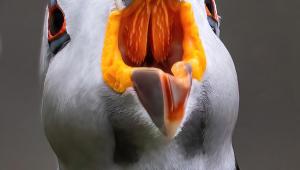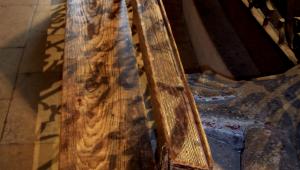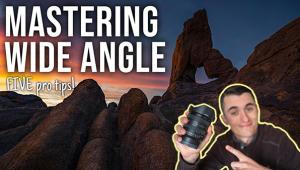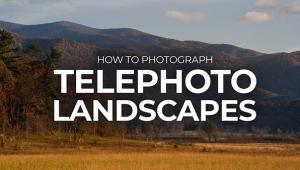Fujifilm's FinePix S20 Pro--Small Camera, Big Results
Unique Chip Makes It Stand Out On A Crowded Field Page 2
First, let's look at some of this camera's strong points. The lens is fabulous. I typically use a 28-105mm f/2.8 lens on my digital SLRs and it's heavy; this thing is a featherweight. You do have to use the buttons on the camera back for zooming operation so it's a little slower than turning a lens manually, but it's no big deal. My files all looked sharp with great contrast and the focus seemed more accurate and quicker than my FinePix S2 Pro.
 |
|
|
Then there's the body. It
fits easily in the hand, is very light, has a built-in flash with plenty of
options, a hot shoe, and an external connection. High marks again for all these
things. And one of the reasons I like my Fuji Pro cameras is the great color
it delivers. This camera continues that tradition. My studio model shots had
wonderful skin tones even on auto white balance.
As a pro, I've never used a camera with an electronic viewfinder, so I
had an acclimation period. Once I got used to the fact that the finder wouldn't
keep up with me on a slide to second base but was very bright and I could also
use the monitor to compose, we became friends. If you're doing fast-moving
sports, this probably isn't the rig for you, but I don't believe
the intended market is for Indy 500 shooters. For 95 percent of the other things
you shoot, it'll be just fine.
 |
|
|
Again, the menu system takes a little
getting used to and a careful read of the instruction book is highly recommended.
For example, I had been using studio flash with a model. When we went outside
to take more images, I wanted to try the fill flash. With instruction book in
hand and my model waiting patiently, I couldn't get it back to the flash!
The menu system wouldn't budge because I was shooting in Auto mode and
I had to put it in one of the other modes, even though the fill flash was to
be used in Auto mode. Hmmm. We didn't get to use it. Remember, too, I
didn't major in rocket science and I'm not the most patient guy
in the world.
I've also got a small gripe about the power and viewing switch. To turn
the camera on, you turn the main dial around the shutter release to either the
shooting mode or the viewing/video mode. The shooting mode is last and to view
images you've taken, you must turn the dial back. I have small hands and
repeatedly would turn the camera off when trying to access the viewing mode.
I got it down, but a gentle touch is required.
 |
|
|
In the final analysis, what separates
this camera from many other similar models is the SR chip. Again, I'm
sure David Brooks or one of the more technical guys could explain it to you
really well. Here's my down-and-dirty take on it: Big sensor for low light.
Smaller sensor for brighter light. Sandwich the two together and you get both
shadow and highlight detail in the same image. How's that? It may not
be scientifically correct but in real world results, which is what I deal with
every day, it works. It's because of advances like this that film's
days are numbered except for niche markets. Can you imagine the technology five
years from now? No, I can't either.
I can tell you that when Fuji announced the FinePix S3 Pro and I saw the chip
size was the same as the FinePix S2 Pro, I thought, why bother? But it does
have the bigger version of this SR chip with the extended dynamic range. Look
at the photos and you'll see the results are quite dramatic. Looks like
my wallet will be taking another hit!
Put together the great lens, SR technology, raw format, Hyper Utility software,
low weight, and a street price of about $800, and you've got a very desirable
combination. This should fly off the dealer shelves.
- Log in or register to post comments

































